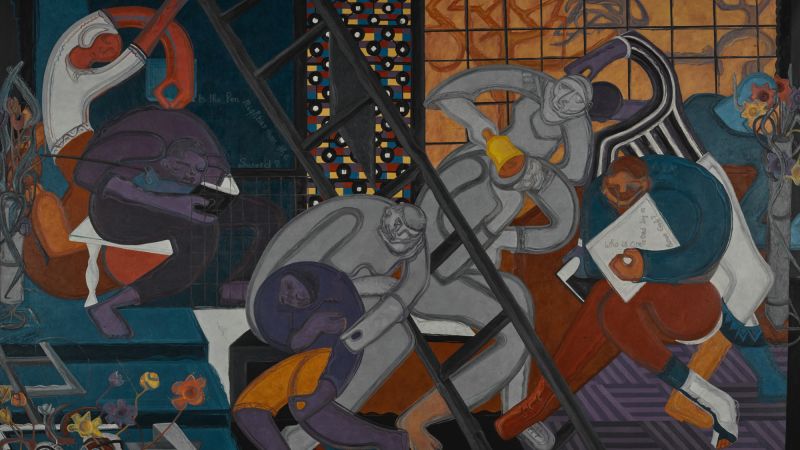Curved lines and block colors in shades of orange, yellow and blue create the image of an artist, framed by a border of abstract shapes. Look a little closer and you can see the artist’s beret with concentric circles, perched atop the solitary figure’s head as they lean over their work.
The painting is by Nigerian artist Uzo Egonu, as part of a series titled “Stateless People,” made in 1981. Egonu settled in Britain in the 1940s, where he spent most of his career until his death in 1996 in London. As an artist yearning for his homeland, Egonu crafted paintings that spoke to feelings of statelessness and the complexity of migration.
Think of modern art and you may think of Pablo Picasso, Georgia O’Keeffe or Salvador Dalí. However, a new exhibition at London’s Tate Modern gallery shows how Nigerian artists have contributed to the movement throughout the 20th century. Egonu is one artist among the more than 50 represented in “Nigerian Modernism” — the first show at the museum to trace modern art from the country. It spans over 250 works created in the 1940s during British colonial rule, through to independence in 1960 and int
Continue Reading on CNN
This preview shows approximately 15% of the article. Read the full story on the publisher's website to support quality journalism.
